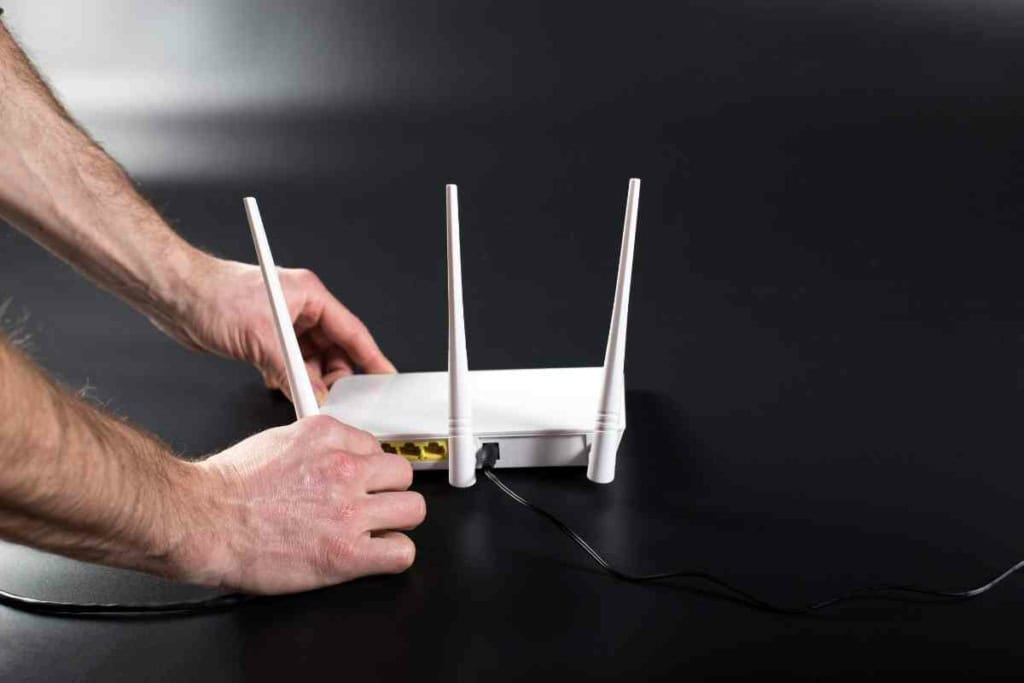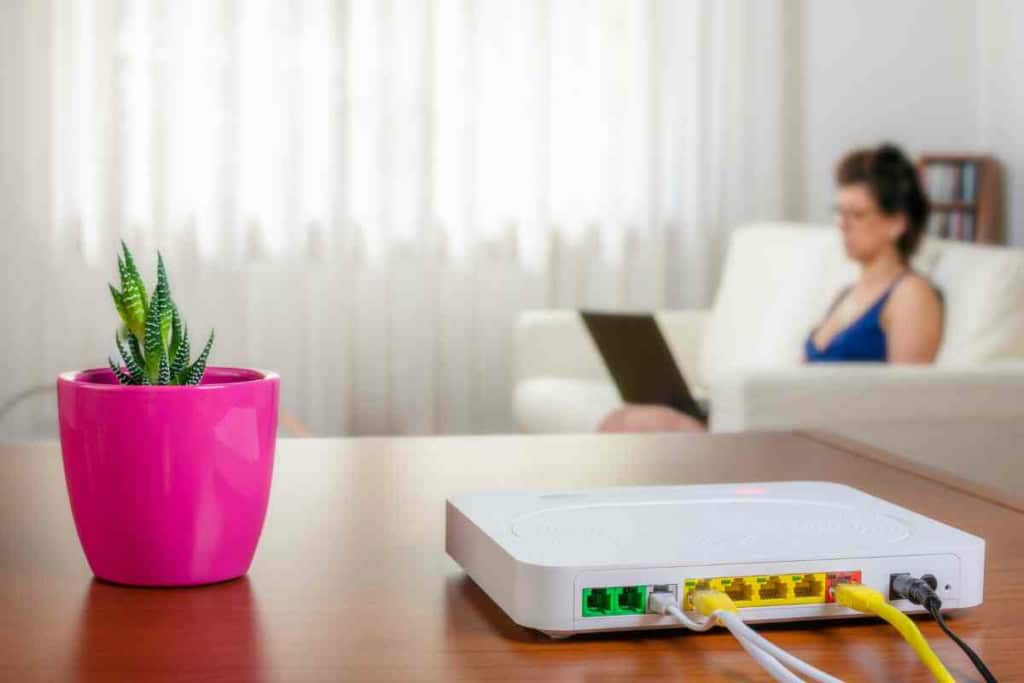How to Easily Connect WiFi on a Lenovo Laptop: Step-by-Step Guide
Connecting your Lenovo laptop to Wi-Fi isn’t just about getting online—it’s about unleashing the full potential of your device. Whether you’re a first-timer or facing Wi-Fi connectivity challenges, this guide will steer you through each step, ensuring a smooth and stable connection.

Related Post! Why Your Lenovo Laptop Power Button is Flashing
How Do You Connect A Lenovo Laptop To Wifi?
To connect a Lenovo laptop to Wi-Fi, click the Wi-Fi icon on the taskbar, select your network, and click “Connect.” If it’s secured, enter the password. Ensure your Wi-Fi is enabled, and your laptop’s drivers are up-to-date for a stable connection.
Key Takeaways
- Familiarize yourself with your Lenovo laptop and the Windows interface before diving into Wi-Fi settings.
- Tackle network settings and Wi-Fi issues with confidence to maintain a robust connection.
- Leverage Lenovo support and resources for a hassle-free setup process.
Understanding Your Lenovo Laptop
Lenovo‘s lineup includes everything from sleek ultrabooks to robust workstations. No matter if you’re a student, professional, or just browsing at home, Lenovo has a laptop that fits your lifestyle. These machines boast long battery life, fast processors, and come in sizes ranging from 11 to 17 inches, ensuring there’s a perfect match for everyone.
Before you attempt to connect to Wi-Fi, make sure your Lenovo is up-to-date. This can be easily done through the Lenovo Vantage app, pre-installed on most devices, which also helps in optimizing your system’s performance.

Steps to Connect to Wi-Fi:
- Click the Wi-Fi icon on your taskbar.
- Select the network you wish to join, then click “Connect.”
- For secured networks, enter the password and click “Connect.”
Lenovo’s Additional Support
Should you encounter any problems, Lenovo’s customer support is ready to assist. Check your repair status or warranty with Lenovo’s online tools for quick updates.
Lenovo also provides extensive resources on environmental policies and product accessibility to ensure you’re making informed decisions. For those looking to engage with fellow users or stay updated on the latest Lenovo innovations, consider joining one of Lenovo’s vibrant communities like Lenovoedu or Lenovopro.
By following these steps and utilizing Lenovo’s resources, connecting to Wi-Fi should be a breeze, enhancing your Lenovo experience and keeping you connected to the world around you.
Related Post! How To Connect AirPods To A Lenovo Laptop In 6 Easy Steps
Setting Up Your Wi-Fi Environment
Setting up your Wi-Fi connection on a Lenovo laptop is straightforward, but it requires attention to ensure a seamless internet experience. Here’s a streamlined guide to get you connected quickly and efficiently.

Checking Your Wi-Fi Connection
First, ensure your Lenovo laptop is Wi-Fi ready. Most models have a built-in Wi-Fi adapter, so additional hardware isn’t necessary. Look for a Wi-Fi switch or an antenna icon on your keyboard—this indicates that Wi-Fi is available. If it’s off, simply toggle the switch to activate.
Connecting Your Router
Next, establish a physical connection between your laptop and router. This typically involves an Ethernet cable. Insert one end into the router and the other into your laptop’s Ethernet port. Your device should automatically recognize the router once connected.
Setting Up Your Wi-Fi Network
To configure your Wi-Fi network:
- Access your router’s configuration page by entering its IP address into a web browser.
- Once logged in, set your SSID and security settings. Opt for WPA2-Personal AES encryption and a robust password to enhance security.
Connecting to Your Wi-Fi Network
With the network configured:
- Click the Wi-Fi icon in your taskbar.
- Select your network from the list. If it’s a hidden network, manually input the SSID.
- Enter the password and hit connect.
Your Lenovo laptop should now be connected to the internet, allowing you to browse, stream, and download as needed.

Navigating the Windows Interface for Wi-Fi Connectivity
Connecting via a Windows interface is straightforward:
- Click the Wi-Fi icon in the system tray.
- Choose your network and click “Connect.”
- For secured networks, enter the password.
If you encounter issues:
- Use the Network and Sharing Center in the Control Panel for troubleshooting.
- For quick settings in Windows 10 and 11, access the menu via the Wi-Fi icon in the system tray.
By following these steps, you can ensure that your Wi-Fi environment on your Lenovo PC is both secure and effective, providing you with a reliable connection for all your online needs.
Related Post! You Are Not Connected To The Internet: The Ultimate Troubleshooting Guide
Connecting to a Wi-Fi Network
Connecting to a Wi-Fi network on your Lenovo laptop is straightforward. Follow these steps to ensure a hassle-free internet experience.
Steps to Connect to Wi-Fi:
- Click on the Wi-Fi icon located in the bottom right corner of the taskbar. This icon resembles radio waves.
- Select the network name you wish to join from the list. If it’s not visible, ensure your laptop’s Wi-Fi is activated and the network is set to be discoverable.
- If the network is secured, a prompt will ask for a network security key or password. Enter this information and click Connect.
- Once connected, the Wi-Fi icon will update to show signal strength, indicating a successful connection.
For networks you’ve previously joined, your laptop will automatically reconnect when they are in range. To forget a network:
- Navigate to Network & Internet settings > Wi-Fi > Manage known networks, and select Forget for the desired network.
If you encounter connection issues, ensure your network adapters are up-to-date via Device Manager. If problems persist, consider resetting your Wi-Fi adapter or restarting your laptop.
Managing Your Network Settings

Effectively managing your network settings is crucial for maintaining a reliable connection. Here’s how to manage these settings on your Lenovo laptop.
Accessing Device Manager
- Open Device Manager: Press Windows key + X and choose Device Manager from the context menu.
- Navigate to Network Adapters to view all installed network devices.
Managing Wi-Fi Adapters
- Right-click the Wi-Fi adapter in the Network Adapters section and select Properties. Here, you can adjust settings like power management and other advanced settings.
Other Network Adapters
- For other adapters, right-click, choose Properties, and tweak settings such as IPv4 and IPv6 configurations.
Tips for a Smooth Connection
- Ensure your Wi-Fi adapter and drivers are up-to-date. Use the Device Manager to check for the latest versions and update drivers as necessary.
- If you experience connectivity issues, double-click the WLAN Autoconfig service in the services management console to ensure it’s set to automatic.
- For hardware-related tweaks, utilize the hardware switch or appropriate keyboard combination to enable/disable Wi-Fi without accessing software settings.
By following these structured steps, you can effectively connect to and manage Wi-Fi networks on your Lenovo laptop, ensuring a stable and secure online experience.
Troubleshooting Wi-Fi Issues
When facing Wi-Fi connectivity issues on your Lenovo laptop, there are several troubleshooting steps you can take to potentially resolve the problem.
Common Troubleshooting Steps:
- Restart Devices: Begin by turning off both your laptop and Wi-Fi router. Wait a few seconds before turning them back on. This simple step can often clear up any connectivity glitches.
- Check Wi-Fi Signal Strength: Weak signals can cause connection issues. Try moving closer to the router or switch to a different network with a stronger signal.
- Verify Network Settings: Ensure you’re connected to the correct wireless network. You can check and adjust your settings via the Control Panel by navigating to Network and Sharing Center.
- Run the Network Troubleshooter: Windows offers a built-in troubleshooter that can diagnose and fix common network problems. Access it through the Control Panel under Troubleshooting > Network and Internet.
- Reset Network Adapter: If the above steps don’t work, try resetting your network adapter. Open Command Prompt as an administrator and type
netsh winsock reset. Restart your laptop and attempt to connect again.
If these steps don’t resolve the issue, consider reaching out to your internet service provider or a professional technician for further assistance.
Understanding Lenovo Support and Resources

Lenovo provides comprehensive support and resources to ensure you can connect to Wi-Fi smoothly and address any issues that may arise.
Support Options:
- Online Support: Lenovo’s support website offers a wealth of information, including articles and guides specifically about Wi-Fi connectivity.
- Phone Support: Available 24/7 for hands-on troubleshooting assistance.
- In-Person Support: Visit a service center for direct help with your device.
Keeping Your Laptop Updated:
Regular updates to your laptop’s drivers and software can prevent or resolve connectivity issues. Lenovo’s website makes it easy to download the latest wireless network driver updates by searching with your product or serial number.
Additional Lenovo Resources:
- Investor Relations: Learn about Lenovo’s financial health and strategic direction.
- Sustainability Efforts: Explore how Lenovo is working to minimize its environmental impact.
- Product Compliance and Security: Discover Lenovo’s adherence to regulations and built-in security features.
- Careers at Lenovo: Interested in joining Lenovo? Their careers page provides details on job openings and the company culture.
Importing and Exporting Network Settings
For those who frequently switch between networks or devices, Lenovo laptops offer a practical feature: the ability to import and export network settings.
How to Import or Export Network Settings:
- Open Control Panel and select “Network and Sharing Center.”
- Click on “Change adapter settings” on the left side.
- Right-click on the network connection and choose “Properties.”
- In the “Sharing” tab, enable “Allow other network users to connect through this computer’s Internet connection.”
- To import settings to another device, connect both devices via Ethernet, repeat the above steps, and select “Set up a new connection or network” on the second device.
Using these features effectively allows for seamless transitions between different network environments, ensuring your Lenovo laptop remains connected wherever you go.